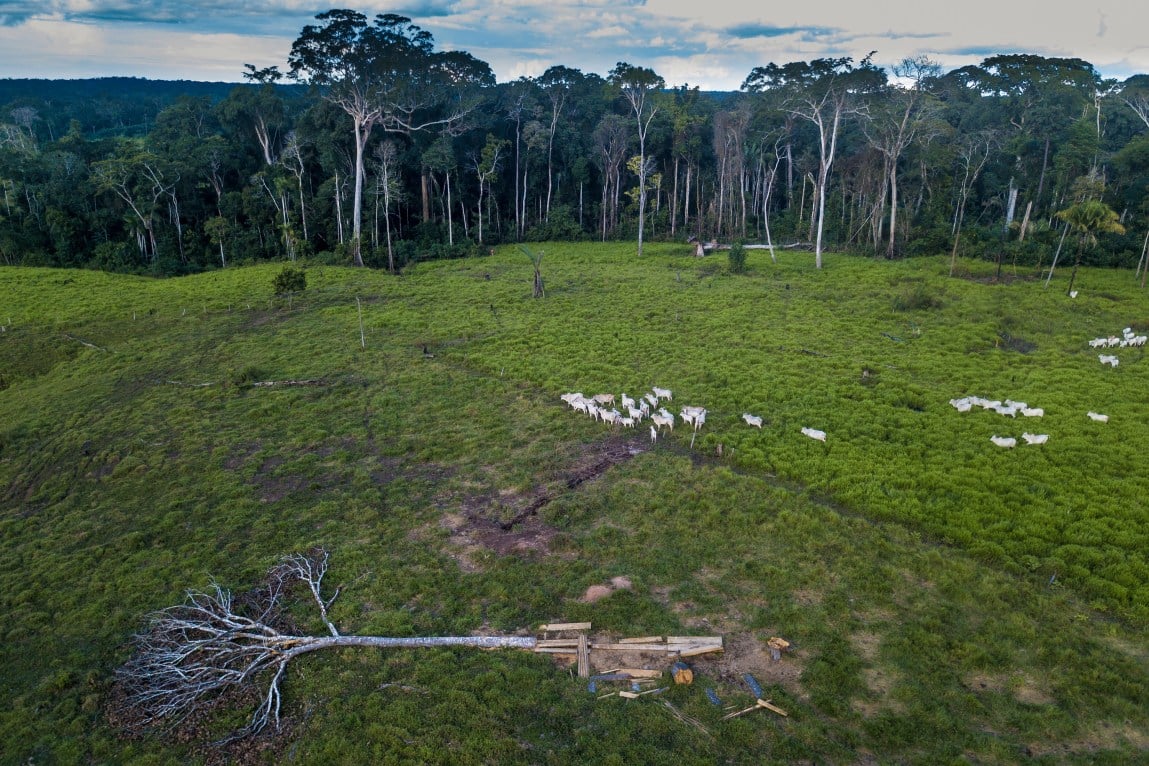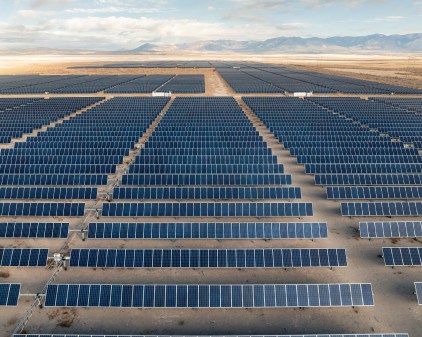When ProPublica published an investigation last week about the persistent problems of carbon credits linked to tropical forest preservation, supporters of the system vehemently disputed whether this meant these initiatives have been, and are likely to continue to be, failures.
These initiatives — known as REDD, or Reducing Emissions From Deforestation and Forest Degradation — allow polluters to offset a portion of their carbon emissions by paying to preserve trees that would otherwise have been cut down (some also reward preservation without giving others permission to pollute). In concept, at least, REDD offers an elegant, win-win solution for slowing climate change, preserving fragile ecosystems without sacrificing economic prosperity.
But our story — based on firsthand observation of the world’s most renowned REDD program in the Brazilian state of Acre, interviews with dozens of scientists and a review of thousands of pages of studies, technical documents and other literature — presented evidence that, in actuality, such ventures have a poor record of delivering the emissions reductions and forest preservation they promise.
Experts in the field are well aware of REDD’s dubious record over a 10-year period. Yet in an outpouring of tweets, press releases and personal messages, proponents insisted it just hasn’t been given the money, support and time it needs to succeed. “REDD is still basically in preschool, and you treat it like it’s just failed its sophomore year in college,” read one email from Neal Dikeman, a Libertarian who recently ran against Ted Cruz and Beto O’Rourke for a Texas Senate seat.
It’s a critical moment for REDD. For years, the stakes have been relatively low. Smaller projects were funded by well-meaning consumers and corporations looking for green public relations. Larger programs have been funded by countries like Norway, looking to help developing countries reduce deforestation without getting offsets in return.
Now, California is considering whether to adopt the Tropical Forest Standard, which could allow companies that operate in the state to meet regulatory requirements to reduce emissions by buying forest offsets from overseas programs. Other countries could and likely would adopt California’s blueprint, potentially expanding REDD on a massive scale.
Given what’s at stake, we thought we’d examine the most common arguments made by REDD’s defenders to see if they hold water.
Argument 1: Large-scale, government-run programs have solved the problems of the past.
As the story noted, REDD comes in many shapes and sizes. There are smaller projects like the one on indigenous Brazilian land that sold credits to FIFA shortly before a faction of the tribe helped destroy more trees than the credits were worth. And there are larger, government-run “jurisdictional” programs like the one in Acre, which I visited. As I wrote, many proponents are staking the future on these larger programs, which would leverage the government’s political power to slow deforestation.
But governments are vulnerable to political shifts that can undermine long-fought efforts. New administrations in Brazil and Acre, elected last year, want to prioritize agribusiness.
At least 39 jurisdictional programs are underway worldwide, most still in development. But they share many of the same problems encountered by smaller-scale projects, when it comes to quantifying the carbon emissions that have been reduced. Numerous factors contribute to the uncertainty of carbon accounting; among them is a concept referred to as additionality: Has the environmental benefit truly come about because of the program, or would it have happened anyway because of existing policies or conditions?
Nearly half of the 39 programs saw lowered deforestation between 2012-2017 — though it’s unknown whether that is because of REDD or some other variable. Proponents of Acre’s program point out that deforestation in the state dropped even as it saw a huge growth in highway construction, which usually increases logging. But it’s hard to untangle the overlapping impacts of REDD and other state and federal policies.
Read More
Another complicating factor: Credits are allotted based, in part, on “baselines” — estimates of the deforestation that would have occurred without the program’s existence. Are these accurate or being gamed to bring in maximum revenue? Disparate baselines used for the Amazon Fund, a kind of regional jurisdictional program, raised questions about how baselines can be gamed.
Sometimes, REDD can slow deforestation within a program’s boundaries by pushing the damage to less protected areas, a byproduct known as leakage. Even when REDD operates on a large scale, it can’t stop international leakage, where global demand for products like beef or soybeans pushes deforestation to less protected countries.
I also cited studies that show wildfires and hard-to-detect forms of tree loss have led countries like Brazil to overestimate carbon reductions from lowering deforestation.
Argument 2: The integrity of REDD projects is safeguarded by watchdogs who accredit them.
Those who work on REDD projects say there have been hundreds of successful projects that have lowered deforestation and helped local communities by selling offsets on the voluntary carbon market, where corporations and consumers pay to reduce their carbon footprints. These projects follow quality assurance guidelines set by organizations like the nonprofit Verra, which put forth the most widely used carbon standard, called VCS.
I spoke with Verra at length while reporting for the story, because it gave this seal of approval to two projects that quickly failed: the indigenous project in Brazil, and one launched in 2008 in Cambodia. Though Verra says its VCS projects are vigorously vetted and monitored by a system set up for accountability, it took outside residents, academics and journalists to flag problems.
For example, the Cambodia project remained on the market as journalists and an academic researcher pointed out major deforestation and the airline Virgin Atlantic announced it had stopped buying credits. A satellite analysis commissioned recently by ProPublica showed the project area had lost half of its forest. One of the protected sites started out as 90% forest, and we found that in 2017, it was down to 0%. Verra told me that the consultants who were supposed to give regular on-the-ground updates haven’t issued a report in more than five years. That triggered an automatic safeguard, where Verra placed 6,000 credits from the project on hold — but that’s nowhere near enough to cover the scale of deforestation on the ground.
I spoke to Verra again after publication. “We have no illusions that every single project is going to be successful,” CEO David Antonioli told me. He reiterated what others at Verra had said earlier, that it uses a “buffer pool” as insurance against these failures. Every project puts a portion of its credits into the pool, where they can’t be sold. The pool currently contains 36 million credits, far more than the 300,000 sold in Cambodia and Brazil. If projects don’t go as planned, the pool covers it, he said.
After the story ran, people asked if we’d considered buffer pools. We did, but the pools only work if the credits in them are valid, which, given the accounting challenges we’ve described, is far from a sure thing. Just as important, Verra’s pool relies on whether the company has an accurate grasp of which trees are still standing and, thus, which offsets paid for by their credits are real. Yet Verra acknowledged that even if it hadn’t had a report from monitors in years, its rules could allow the project to keep selling credits for another 10 to 15 years.
I asked the CEO how the company could guarantee that the credits it continues to sell are actually helping to preserve trees if it might go as long as two decades without checking.
Antonioli said, “Anybody who is interested in buying such credits would want to do their due diligence and check to see what’s happening on the ground.”
He said Verra gives projects flexibility on providing updates because “some projects may not necessarily be having bad things happening on the ground,” but are struggling to pay for the consultants handling the updates. At the end of the day, the buffer pool covers those problems, he said. “If the buffer pool were zero and people were still issuing credits and projects were falling apart, then I’d have a problem. But we don’t. And the reality is the buffer pool has plenty of credits in it right now, and it covers reversals like this. That the system as a whole, works.”
He said he does not believe additionality and baselines undermine projects.
Argument 3: California’s tropical forest standard accounts for the problems of the past.
The Environmental Defense Fund, in a blog post about “What ProPublica’s forest carbon credits story gets wrong — and right,” said, “ProPublica missed that California’s Air Resources Board was very aware of all of these problems, and designed its Tropical Forest Standard (TFS) accordingly.”
Actually, the story included that very thought, saying: Stanley Young, a spokesman for the board, told me California’s standard has built-in safeguards to avoid repeating mistakes. “We’re as aware as you are of how it has not worked in the past,” he said.
As I wrote, the standard does have strong rules on permanence, requiring reduced deforestation levels to remain in place for 100 years. It also tries hard to ensure additionality, requiring programs to exceed protections in existing conservation policies and to show a drastic reduction in deforestation.
But it still has some important weaknesses.

It can’t solve international leakage. Jason Gray, who leads the board’s work on cap-and-trade, told me it’s an unreasonable expectation, since the only solution would be if a significant number of countries and states implement REDD simultaneously.
California’s standard also lets programs choose whether they will report their emissions from degradation, the thinning of trees from wildfires and logging, which a major study found cut the Amazon’s carbon content by an average of 55%. Scientists have warned since at least 2010 that leaving out degradation could undermine the integrity of carbon accounting.
Argument 4: More money can solve the problem.
Unless the rich nations of the world become much more generous, pumping significantly more money into REDD will require bringing it to the compliance market, allowing countries and industries to write off mandated emissions reductions with these credits. Money from these offset-hungry customers could make a meaningful difference to curbing some of these problems. For example, it would help with monitoring, funding patrols to make sure trees aren’t cut down and helping programs implement better technology to more accurately quantify the trees still standing. But this shift to the compliance market requires a gamble: selling imperfect credits today, on the hope that the money they generate will make the system more perfect in the long run.
And even then, there are problems money will never be able to fix, including inherent uncertainties with calculating baselines. This guess at what deforestation would look like without offsets is even harder to calculate on a jurisdictional level, said Michael Wara, a researcher who directs a climate and energy program at Stanford University: How can you accurately predict the price of soybeans for the next decade, or how changes in the economy and international trade deals would affect deforestation pressures in a particular state in Brazil?
After reading the investigation, he told me, “It is easy to sit at a university and say, we need to protect tropical forests,” and, he added, wouldn’t it be cool to monetize the financial value of carbon to pay forest communities? “It is very hard to do well in practice. At best, we’re still learning.”
















